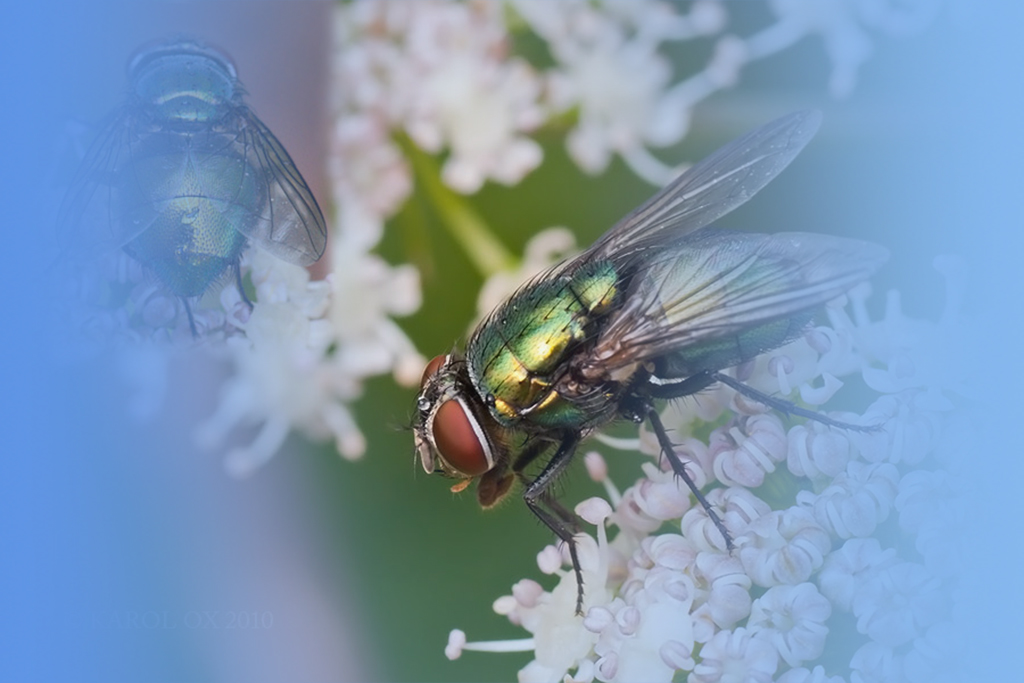[1] Ministry of Health of the People's Republic of China, Standardization Administration of the People's Republic of China. GB/T 26350-2010Test methods of fly resistance to insecticides-The bioassay methods forMusca domestica[S]. Beijing:Standards Press of China, 2011. (in Chinese) 中华人民共和国卫生部, 中国国家标准化管理委员会. GB/T 26350-2010蝇类抗药性检测方法 家蝇生物测定法[S]. 北京:中国标准出版社, 2011.
[2] Liu HX, Leng PE, Liu Y, et al. Insecticide resistance tendency of Aedes albopictus and Musca domestica in Shanghai, China from 2015-2019[J]. Chin J Vector Biol Control, 2020, 31(2):137-142. DOI:10.11853/j.issn.1003.8280.2020.02.004.(in Chinese) 刘洪霞, 冷培恩, 刘曜, 等. 上海地区2015-2019年白纹伊蚊和家蝇的抗药性发展动态[J]. 中国媒介生物学及控制杂志, 2020, 31(2):137-142. DOI:10.11853/j.issn.1003.8280.2020.02.004.
[3] Sun YX, Su HY, Liang CW, et al. Resistance of Musca domestica to five insecticides in Dezhou City in 2022[J]. Chin J Hyg Insect Equip, 2023, 29(3):213-215. DOI:10.19821/j.1671-2781.2023.03.006.(in Chinese) 孙玉霞, 苏厚谊, 梁朝伟, 等. 2022年德州市家蝇对5种杀虫剂的抗性调查[J]. 中华卫生杀虫药械, 2023, 29(3):213-215. DOI:10.19821/j.1671-2781.2023.03.006.
[4] Wu YY, Liu QM, Wang JN, et al. Resistance of Musca domestica to commonly used insecticides in Zhejiang Province, China, 2021[J]. Chin J Vector Biol Control, 2023, 34(1):26-30. DOI:10.11853/j.issn.1003.8280.2023.01.005.(in Chinese) 吴瑜燕, 刘钦梅, 王金娜, 等. 2021年浙江省家蝇对常见卫生杀虫剂的抗药性研究[J]. 中国媒介生物学及控制杂志, 2023, 34(1):26-30. DOI:10.11853/j.issn.1003.8280.2023.01.005.
[5] Zhang YJ, Zhao CC, Feng XM, et al. Establishment of baseline sensitivity of laboratory strains of houseflies to commonly used insecticides[J]. Chin J Vector Biol Control, 2023, 34(6):719-722. DOI:10.11853/j.issn.1003.8280.2023.06.002.(in Chinese) 张亚军, 赵春春, 冯星明, 等. 实验室品系家蝇对常用杀虫剂敏感基线的建立[J]. 中国媒介生物学及控制杂志, 2023, 34(6):719-722. DOI:10.11853/j.issn.1003.8280.2023.06.002.
[6] Zhou LC, Bao JY, Chen XM, et al. Study on the trend of insecticide resistance of Musca domestica in Wuhan[J]. Chin J Vector Biol Control, 2017, 28(5):502-504. DOI:10.11853/j.issn.1003.8280.2017.05.026.(in Chinese) 周良才, 包继永, 陈晓敏, 等. 武汉市家蝇对常用卫生杀虫剂抗药性发展趋势研究[J]. 中国媒介生物学及控制杂志, 2017, 28(5):502-504. DOI:10.11853/j.issn.1003.8280.2017.05.026.
[7] Jiang GQ, He XJ, Li J. Resistance of Musca domestica to commonly used insecticides in Shaoxing City, China in 2017[J]. Chin J Vector Biol Control, 2018, 29(3):307-308. DOI: 10.11853/j.issn.1003.8280.2018.03.024.(in Chinese) 蒋国钦, 何学军, 李金. 浙江省绍兴市2017年家蝇对5种常用杀虫剂的抗药性研究[J].中国媒介生物学及控制杂志, 2018, 29(3):307-308. DOI: 10.11853/j.issn.1003.8280.2018.03.024.
[8] Han XL, Ma LH, Huang G, et al. Analysis on resistance trend of Musca domestica to different types of insecticides in Hebei Province, China, during 2012-2016.[J]. Chin J Vector Biol Control, 2017, 28(4):364-367. DOI: 10.11853/j.issn.1003.8280.2017.04.015.(in Chinese) 韩晓莉, 马丽华, 黄钢, 等. 2012-2016年河北省家蝇对不同类型杀虫剂的抗药性趋势分析[J]. 中国媒介生物学及控制杂志, 2017, 28(4):364-367. DOI: 10.11853/j.issn.1003.8280.2017.04.015.
[9] Lin CY, Yang XY, Chen XW, et al. Analysis on population density and seasonality of flies in Haikou City from 2011 to 2016[J]. Chin J Vector Biol Control, 2017, 28(3):291-293. DOI:10.11853/j.issn.1003.8280.2017.03.025.(in Chinese) 林春燕, 杨新艳, 陈学文, 等. 海口市2011-2016年蝇类种群密度及季节消长分析[J]. 中国媒介生物学及控制杂志, 2017, 28(3):291-293. DOI:10.11853/j.issn.1003.8280.2017.03.025.
[10] Zhang YJ, Wang YG, Zhao N, et al. Long-term trends in housefly (Musca domestica L.) insecticide resistance in China[J]. Pestic Biochem Physiol, 2024, 201:105880. DOI:10.1016/j.pestbp.2024.105880.
[11] Gao Y, Wu Y, Du GJ, et al. An investigation of resistance of Musca domestica to commonly used public health insecticides in Chengde, Hebei Province, China, 2020[J]. Chin J Vector Biol Control, 2022, 33(3):434-437. DOI:10.11853/j.issn.1003.8280.2022.03.023.(in Chinese) 高杨, 武英, 杜国君, 等. 河北省承德市2020年家蝇对常用卫生杀虫剂的抗药性调查[J]. 中国媒介生物学及控制杂志, 2022, 33(3):434-437. DOI:10.11853/j.issn.1003.8280.2022.03.023.
[12] MA YT. Resistance of Musca domestica to common hygienic insecticides in Jinnan District, Tianjin, China[J]. Chin J Vector Biol Control, 2019, 30(2):221-223. DOI: 10.11853/j.issn.1003.8280.2019.02.026.(in Chinese) 马玉涛. 天津市津南区家蝇对常用卫生杀虫剂的抗药性研究[J]. 中国媒介生物学及控制杂志, 2019, 30(2):221-223. DOI: 10.11853/j.issn.1003.8280.2019.02.026.
[13] Pan J, Zhou YH, Li M, et al. Frequency dynamics of pyrethroid resistance alleles in a field-derived house fly colony in absence of insecticide selection[J]. Acta Parasitol Med Entomol Sin, 2015, 22(3):176-180. DOI:10.3969/j.issn.1005-0507.2015.03.006.(in Chinese) 潘婧, 周云辉, 李梅, 等. 在无杀虫剂选择下家蝇拟除虫菊酯抗性等位基因频率的变化[J]. 寄生虫与医学昆虫学报, 2015, 22(3):176-180. DOI:10.3969/j.issn.1005-0507.2015.03.006.
[14] Wang ZG, Hai XP, Xu YH, et al. Stability of two kinds of pyrethroids resistance in housefly (Diptera:Muscidae)[J]. Chin J Vector Biol Control, 2006, 17(4):286-287. DOI:10.3969/j.issn.1003-4692.2006.04.009.(in Chinese) 王志钢, 海秀平, 许永红, 等. 家蝇对两种拟除虫菊酯类杀虫剂抗性的稳定性[J]. 中国媒介生物学及控制杂志, 2006, 17(4):286-287. DOI:10.3969/j.issn.1003-4692.2006.04.009.
[15] Ma Z, Zhou XJ, Li J, et al. An investigation of the resistance of Musca domestica to six commonly used insecticides in Beijing, China, in 2017[J]. Chin J Vector Biol Control, 2019, 30(1):69-71. DOI: 10.11853/j.issn.1003.8280.2019.01.015.(in Chinese) 马卓, 周小洁, 李静, 等.北京地区2017年家蝇种群对6种常用杀虫剂的抗药性调查[J].中国媒介生物学及控制杂志, 2019, 30(1):69-71. DOI: 10.11853/j.issn.1003.8280.2019.01.015.
[16] Liang W, Yang KB, Jiang LD, et al. Resistance of adult Culex quinquefasciatus and Musca domestica to commonly used insecticides in Dazu District, Chongqing, 2023[J]. Shanghai J Pre Med, 2024, 36(6):563-565. DOI:10.19428/j.cnki.sjpm.2024.23597.(in Chinese) 梁维, 杨克波, 蒋立丹, 等. 2023年重庆市大足区致倦库蚊成蚊和家蝇成蝇常见杀虫剂的抗药性[J].上海预防医学, 2024, 36(6):563-565. DOI:10.19428/j.cnki.sjpm.2024.23597.
[17] Shan C, Zhang Y, Ma Z, et al. Inheritance of propoxur resistance in a near-isogenic line of Musca domestica (Diptera:Muscidae)[J]. J Econ Entomol, 2016, 109(2):873-878. DOI:10.1093/jee/tow001.
[18] Barnes EH, Dobson RJ, Barger IA. Worm control and anthelmintic resistance:Adventures with a model[J]. Parasitol Today, 1995, 11(2):56-63. DOI:10.1016/0169-4758(95)80117-0.
[19] Yang C, Pan J, Li M, et al. Occurrence and evolutionary origin of insecticide resistance-conferring mutations in carboxylesterase (MdαE7) in Chinese house fly populations from five provinces[J]. Acta Parasitol Med Entomol Sin, 2023, 30(2):88-94. DOI:10.3969/j.issn.1005-0507.2023.02.006.(in Chinese) 杨婵, 潘婧, 李梅, 等. 家蝇羧酸酯酶MdαE7抗药性相关基因突变检测及其进化起源分析[J]. 寄生虫与医学昆虫学报, 2023, 30(2):88-94. DOI:10.3969/j.issn.1005-0507.2023.02.006.
[20] Feng XC, Liu NN. Functional analyses of house fly carboxylesterases involved in insecticide resistance[J]. Front Physiol, 2020, 11:595009. DOI:10.3389/fphys.2020.595009.
[21] Zhang Y, Li J, Ma Z, et al. Multiple mutations and overexpression of the MdαE7 carboxylesterase gene associated with male-linked malathion resistance in housefly, Musca domestica (Diptera:Muscidae)[J]. Sci Rep, 2018, 8(1):224. DOI:10.1038/s41598-017-17325-x. |



